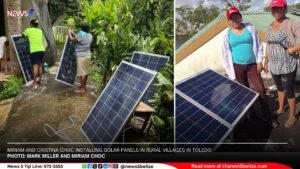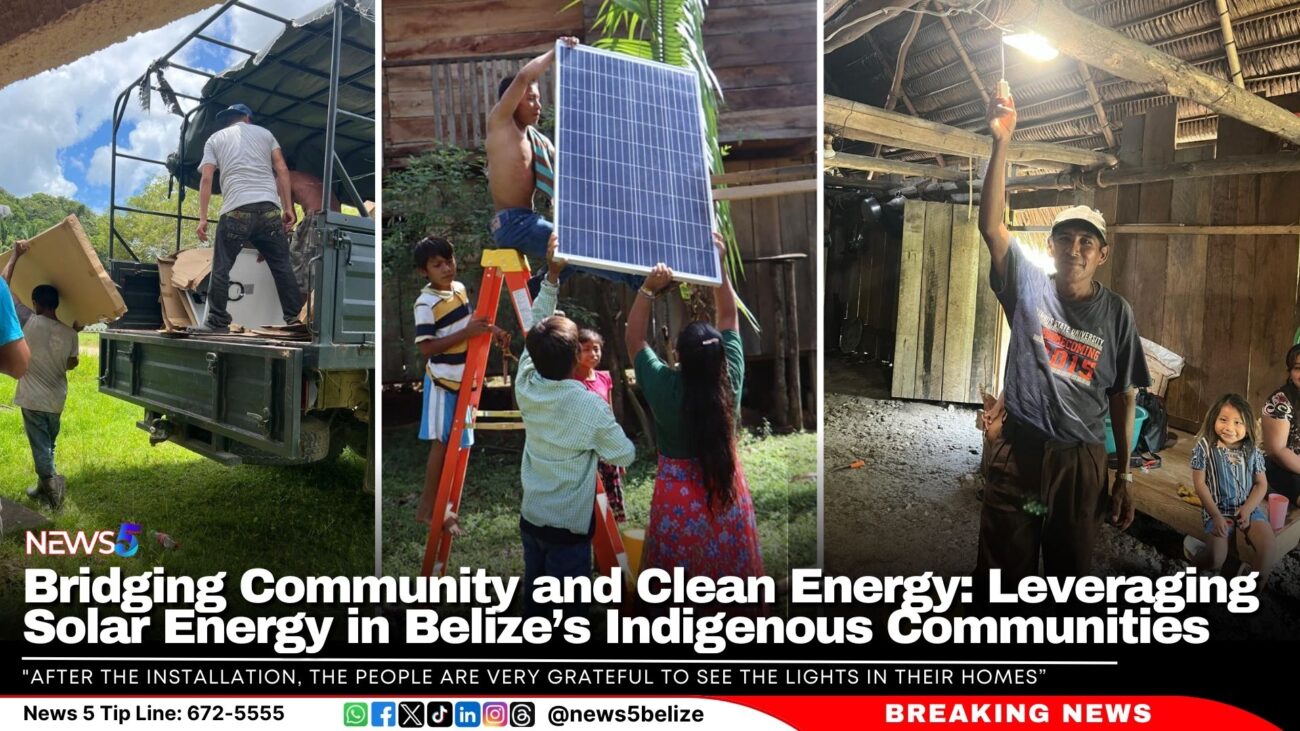Bridging Community and Clean Energy: Leveraging Solar Energy in Belize’s Indigenous Communities
Belize faces ongoing challenges in maintaining a stable power supply. With rising demand in Belize and persistently high temperatures, the risk of power outages looms. Belize stands at a critical crossroads with a record number of power outages due to “load shedding” earlier this year. The country saw temporary electricity cutoffs to maintain stability in the national grid.
Belize relies on the Mexican energy supplier, Comisión Federal de Electricidad (CFE), which normally provides “up to 55 MW of capacity to the grid,” according to Belize Electricity Limited (BEL). While CFE has been a reliable partner since the 1990s and helps keep costs down, it has faced its own generation and transmission issues this year, leading to numerous disconnections in Belize. Under a Power Purchase Agreement signed in February 2018, BEL has been buying “opportunity cost energy” from CFE, allowing for additional power purchases when prices are low but also making this supply vulnerable to interruption.
But as Belize’s economy grows, the demand for energy rises. This highlights the urgent need for the country to develop its own electricity generation capacity to meet peak demand and reduce reliance on CFE.

Solar Sisters: Women Leading the Solar Charge
Leading Belize’s renewable energy movement within indigenous communities are three Maya women who are bringing solar power to their villages, transforming lives and fostering sustainable change. Since 2016, Florentina Choco, along with sisters Miriam and Cristina Choc from the Toledo District, have been bringing solar power to remote, off-grid areas.
Through the Small Grants Programme (SGP), managed by the United Nations Development Programme (UNDP), they underwent six months of solar energy training at Barefoot College International in India.
Florentina Choco, the pioneer, was the first woman to receive this training in 2013. Motivated by the need for electricity in her community and its impact on local education, she decided to take action. “I didn’t know anything at all… just heard about it, but eventually I knew how to connect solar. I can see my village… there is no light, no electricity. I want to help the community and the children in school,” she said. Two years after returning to Belize, she helped install light systems in her village and three others: Santa Elena, Graham Creek, and Machakilha.

In 2017, sisters Miriam and Cristina followed in her footsteps and travelled to India for their own solar energy training. “After the installation, the people are very grateful to see the lights in their homes,” Miriam noted. “Our plan is to electrify all communities without access to electricity.” As a result, schools gained access to modern technology like projectors and computers.
While traditional gender roles can be rigid in some indigenous communities, the women have effectively navigated these challenges. Miriam stated, “It’s bringing a change in the Maya women’s culture; it empowers… like we open the way so that other women… can participate in any projects or any trainings.”
“The three women being indigenous themselves… were able to relate to the culture in ways that I never could,” said Mark Miller, the retired executive director of Plenty International Belize Limited, who facilitated the solar training in India.
Cristina added that during installations, they teach local women how to install and maintain solar systems. “We train them… how to take care of their system,” she said.
As they gained experience, the women realised their skills were underutilised in their own villages. They are currently working in six villages, including Yalbac in the Cayo District.
Making Solar Work for Everyone
With increasing recognition of solar energy’s potential, Belize is exploring strategies to harness this essential resource for economic growth, particularly in tourism and agribusiness. The country is taking steps to reduce dependence on imported electricity and diversify its energy generation mix by expanding renewable sources where commercially viable.
Indigenous communities, such as Corazon and Indian Creek, have welcomed solar technology through private-government partnerships. However, transitioning to solar energy requires significant investment.
Interest in solar energy is growing, driven by financing options like special loans from the Development Finance Corporation (DFC) for Energy Efficiency and Renewable Energy (EERE) Projects. Solar Energy Solutions Belize (SESB), operating for 13 years, is one company facilitating community transitions to solar energy.
Co-founder Silvan Kuffer explained the inefficiencies of traditional generators in many Maya villages. “A little generator is not efficient. You run that thing one night just to have a fan blowing on you—five gallons of gas gone,” he explained. “Now, power from a solar system through a meter, they can blow the fan all night… and it’s going to cost them the same 80 cents or one dollar it’s costing another Belizean for the power.”
However, as the demand for solar energy grows in Belize, there is an urgent need for trained solar technicians. “Yes, there are no moving parts, but all of them need maintenance. They need cleaning. And that is, if the industry goes so quick, we’re going to have a lot of boats on the water, but not many captains.” He noted that a structured approach from the government to address this rising issue would be beneficial.

Vision for Renewable Energy in Belize
The Belizean government is committed to a sustainable energy future, with recent policy changes facilitating solar power integration, particularly for marginalised communities. Belize’s adoption of solar energy contributes to sustainability and reduces carbon emissions, aligning with global efforts to combat climate change.
In the 2023 Belize Energy Policy, the Government of Belize committed to becoming a low-carbon, energy-efficient nation by 2040, addressing climate change and energy system interconnectedness. The policy emphasises enhancing resilience, supporting energy transitions, and ensuring equitable benefits for all citizens, including indigenous communities.
Belize is doing relatively well compared to other Caribbean nations in supporting small solar projects. Previously, small solar users connected to the grid without contributing to stability. A lack of rules, like feed-in tariffs, limited the ability of solar panel users to sell excess energy back to the grid, helping to maintain the overall energy system. However, the new Electricity Licensing and Consent Regulation passed on March 1, 2024, modernises the regulatory environment for electricity supply, transmission, distribution, and energy storage. The new regulation outlined in Statutory Instrument (S.I.) 39 “is actually geared at opening up the energy market and the energy sector,” said Minister of Energy Michel Chebat, adding, “For the first time in Belize, in the history of Belize, you see a piece of legislation that is actually opening up the energy sector.”

by Benita Kemé-Palacio, Digital Content Creator







Facebook Comments